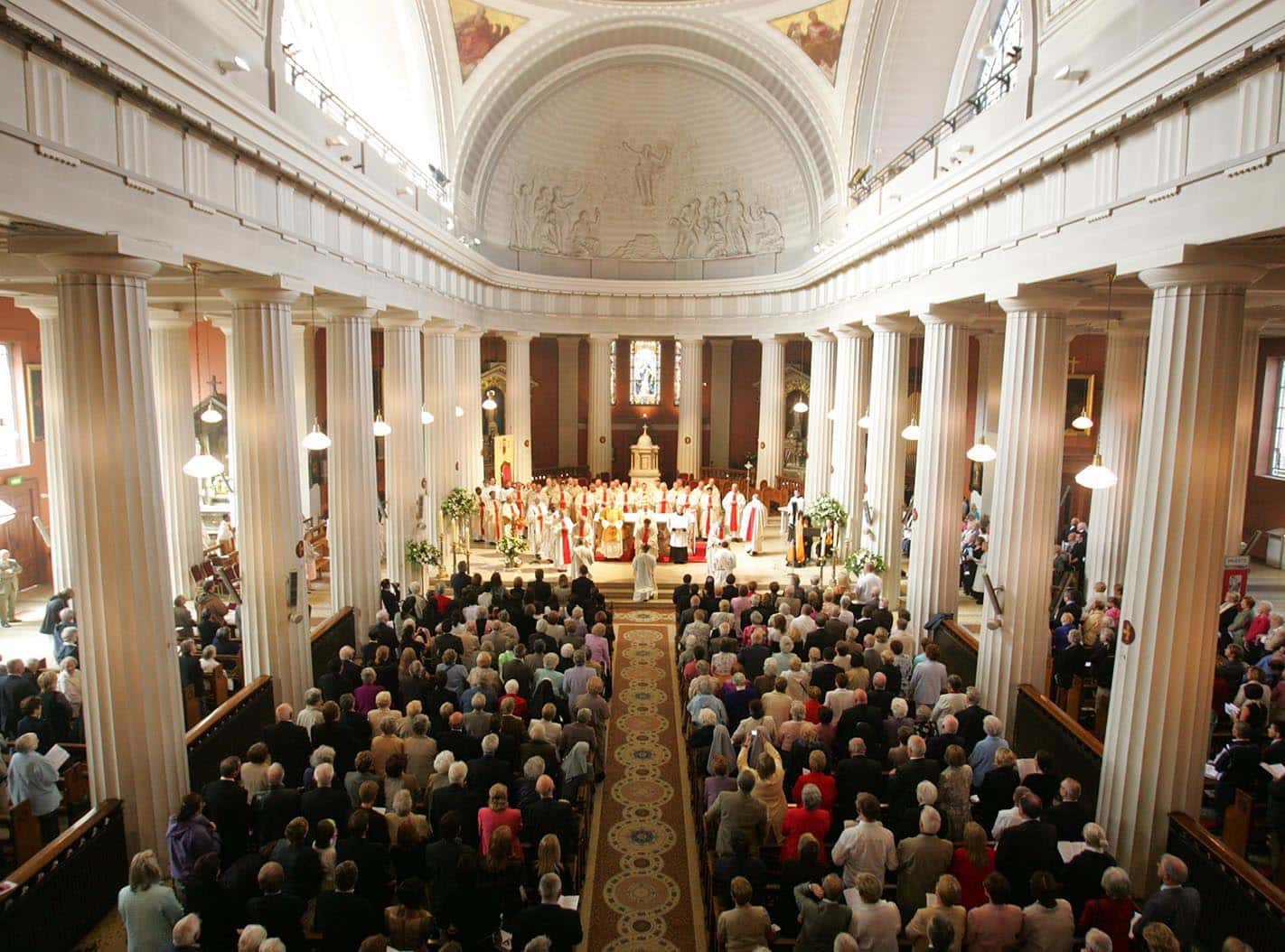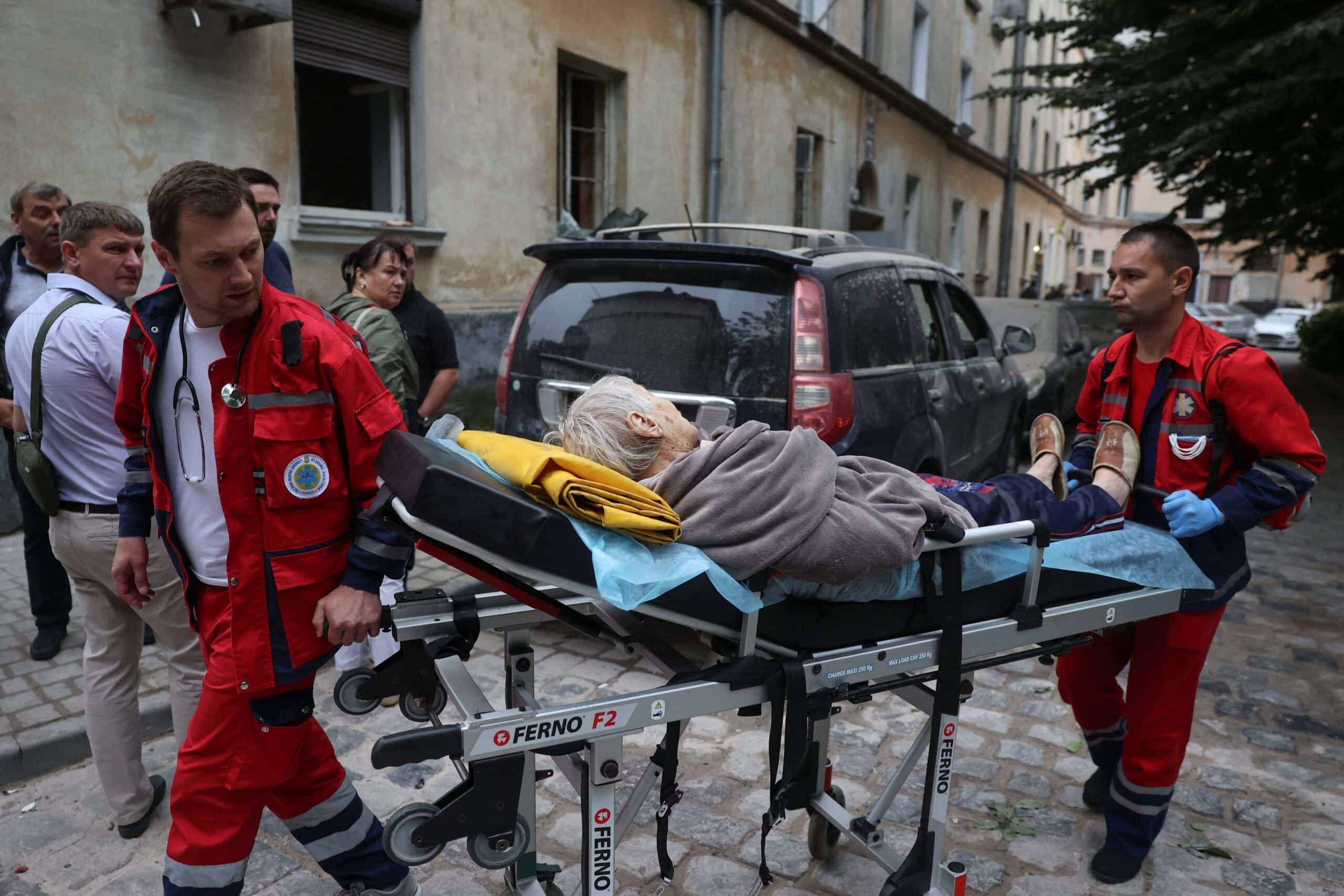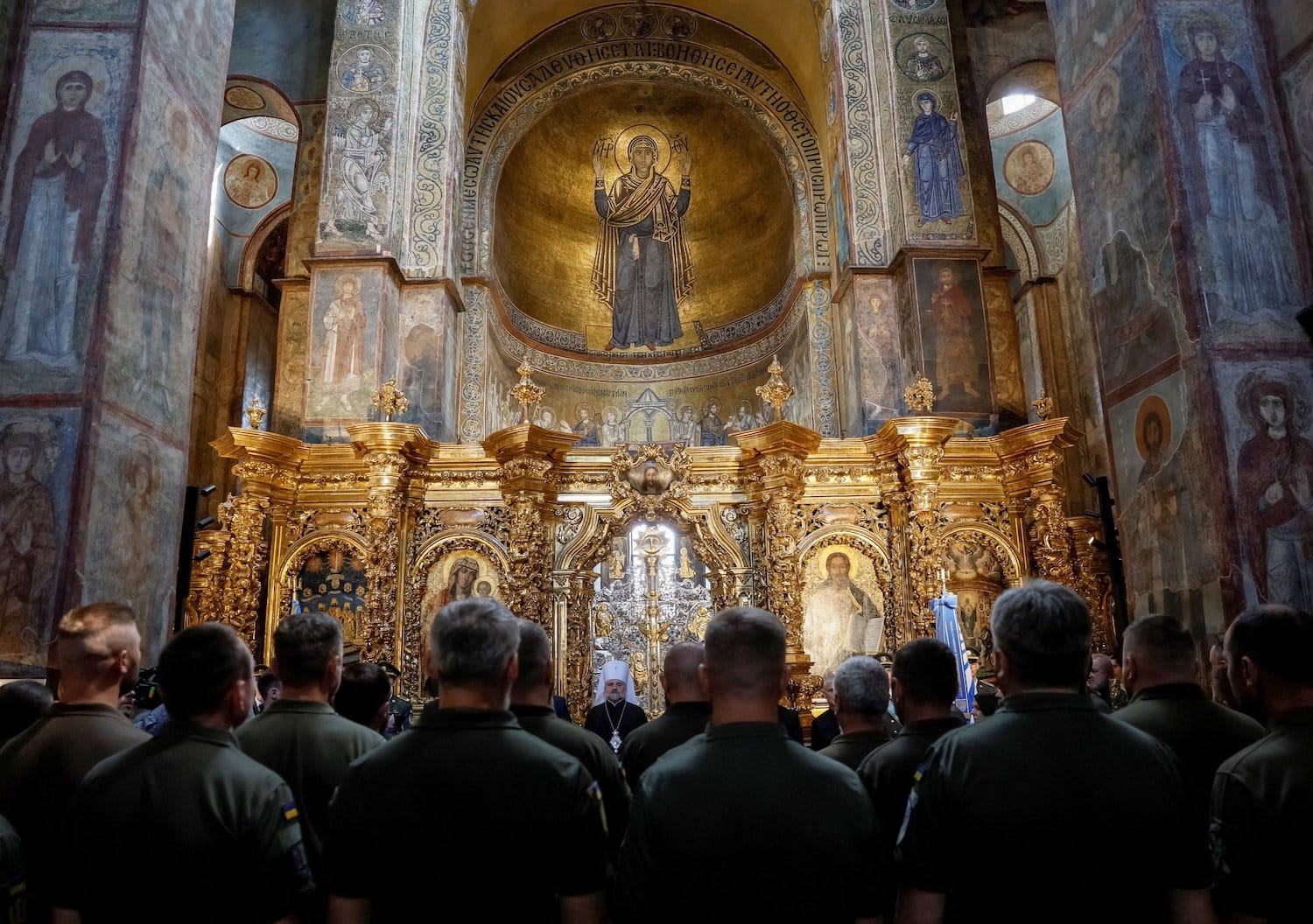DUBLIN (OSV News) — The largest archdiocese in Ireland may finally get a cathedral for its 1 million Catholics, following Archbishop Dermot Farrell of Dublin’s surprise announcement of an initiative to identify the church that could best fulfill a cathedral function for the city.
Two locations were named by Archbishop Farrell in a statement June 22, which revealed that a project group was being set up to study the future of St. Mary’s Pro-Cathedral on the north side of the River Liffey and St. Andrew’s Church on the south side. Both churches are located in Dublin’s city center.
The cathedral proposal, when it is formulated, will require approval by Rome and could see St. Mary’s Pro-Cathedral, which was built nearly 200 years ago and has served as a de facto cathedral, designated as a basilica, and St. Andrew’s Church, which was built shortly after St. Mary’s, take on the mantle of a cathedral.
According to the archdiocese’s statement, “There are strong grounds for considering that St. Andrew’s might better serve the cathedral function.” A spokesman for the Archdiocese of Dublin, Peter Henry, told OSV News that “St. Andrew’s has a far larger capacity with excellent sight lines for those attending liturgies and other events.”
Presidents, government ministers, prelates and even Pope Francis (in 2018), have attended St. Mary’s Pro-Cathedral on occasions of religious significance. However, the church, an impressive classical revival-style building, is situated in the back of one of Dublin’s main streets.
Not a downgrade
Under the Penal Laws, enforced during British colonial rule, Catholics were not permitted to erect churches on a main street. St. Mary’s was officially opened in 1825, four years before Catholic Emancipation. As the principal Catholic church in Dublin, it was designated a pro-cathedral, meaning it was an “acting” cathedral, but technically it was still a parish church.
According to Father Kieran McDermott, administrator of St. Mary’s, any suggestion that the pro-cathedral is being downgraded “is misplaced and simply inaccurate.”
He said the pro-cathedral has “a number of limitations” and these include the fact that those seated in the side areas of the church have either partial views or very restricted views of the sanctuary which is “unsatisfactory in any liturgical space, but especially in a cathedral setting.”
Secondly, the attic accommodation for the renowned Palestrina Choir and the Girls’ Choir is “really unsuited for rehearsals, robing and the storage of music manuscripts.”
The administrator of St. Andrew’s Church, Father Enda Cunningham, stressed to OSV News that Archbishop Farrell’s proposal is a “twin-pillar” one, envisaging the development of both St. Mary’s and St. Andrew’s as centers of a renewed pastoral and missionary strategy for Dublin.
According to the spokesman of the archdiocese, “If this proposal goes ahead, it will represent an upgrade for both St. Mary’s and St. Andrew’s. A basilica is a designation received from the pope for churches with a particular historical or devotional significance. A cathedral is the main teaching church of a diocese, and the location of the bishop’s seat.”
Strengthening the local Church
Archbishop Farrell has been considering how the presence of the church in Dublin can be strengthened, and how to reach out to an increasing number of people who have no established links with either the church or an individual parish. He highlighted how in most major cities, the cathedral church acts as a focal point of encounter and mission with the wider culture.
“The archbishop made it clear in his statement that this proposal is about the mission of the diocese and its presence in the life of the city,” Father Cunningham said.
The consultation has just begun. At Sunday Masses June 25, a letter from Archbishop Farrell was read to the congregations at St. Mary’s and St. Andrew’s.
According to information obtained by OSV News, it seems as though the cathedral proposal was only brought to the Council of Priests in Dublin for discussion a day before the Archdiocese of Dublin made the statement public. Neither the parish council of St. Mary’s nor that of St. Andrew’s was consulted prior to the announcement.
The task of a project group, which will include representatives of both St. Mary’s and St. Andrew’s, will involve examining the physical and structural fabric of both churches, as well as their financials and other resources.
However, not everyone is convinced that the project is needed and questions the lack of consultation. Anthony Neville, a parishioner in Baldoyle Parish in Dublin, told OSV News that “a cathedral is not the most pressing question at this time. Attendances at Masses are down, collections are down, and the archbishop says it will not be possible to provide Masses in every parish due to (the) declining number of priests.”
“In all of the synodal gatherings and the ‘Building Hope’ listening process in Dublin, there was no mention, let alone a desire expressed for a cathedral. Why not just rename St. Mary’s as a cathedral?” Neville asked.







